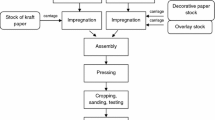Abstract
We investigated a suspected cluster of lymphohaematopoietic cancer in departments of biology and chemistry at a Norwegian university. A historical cohort of students and employees (n = 7,189) were followed for cancer for 96,936 person-years in the Cancer Registry of Norway. Overall, 12 cases of lymphohaematopoietic cancer were identified, which was close to the expected number (standardised incidence ratio 1.1, 95% confidence interval (CI) 0.6–1.9). The SIR for leukaemia was 1.8 (95% CI 0.6–4.2) whereas incidences for non-Hodgkin lymphoma and Hodgkin’s disease incidence were close to the expected. Distinct rate differences were observed in subgroups, and the strongest adjusted associations were found for Ph.D. students (rate ratio (RR) = 4.8, 95% CI 1.1–20.3) and students who participated in basic organic chemistry laboratory course (RR = 4.4, 95% CI 1.2–18.8). The latter category was identified a priori because it was the only student activity with known use of benzene according to the university administration. This is an observational study with some limitations, and hence, caution is warranted when drawing inferences on the causal relationship between university activities and cancers under study. The study provides an example that cluster investigations can answer questions of public importance despite a more limited value regarding causal inference.
Similar content being viewed by others
References
International Programme on Chemical Safety (IPCS). Selected radionuclides. Environmental Health Criteria 25. Geneve: WHO; 1983. p. 198.
International Programme on Chemical Safety (IPCS). Benzene. Environmental Health Criteria 150. Geneve: WHO;1993. p. 113–4.
United Nations Scientific Committee on the Effects of Atomic Radiation, UNSCEAR. Sources and effects of ionizing radiation: UNSCEAR 2000 report to the General Assembly, with scientific annexes. Volume II: Effects. New York: United Nations; 2000. p. 343–52. http://www.unscear.org/docs/reports/annexi.pdf. Accessed 20 September 2007.
Snyder R. Benzene and leukemia Crit Rev Toxicol 2002;32:155–210.
Glass DC, Gray CN, Jolley DJ, et al. Leukemia risk associated with low-level benzene exposure. Epidemiology 2003;14:569–77.
Hayes RB, Yin SN, Dosemeci M, et al. Benzene and the dose-related incidence of hematologic neoplasms in China. Chinese academy of preventive medicine-national cancer institute benzene study group. J Natl Cancer Inst 1997;89:1065–71.
Rachet B, Partanen T, Kauppinen T, et al. Cancer risk in laboratory workers: an emphasis on biological research. Am J Ind Med 2000;38:651–65.
Savitz DA, Andrews KW. Review of epidemiologic evidence on benzene and lymphatic and hematopoietic cancers. Am J Ind Med 1997;31:287–95.
Golden R, Pyatt D, Shields PG. Formaldehyde as a potential human leukemogen: an assessment of biological plausibility. Crit Rev Toxicol 2006;36:135–53.
Lynge E, Anttila A, Hemminki K. Organic solvents and cancer. Cancer Causes Control 1997;8:406–19.
Andersen A, Barlow L, Engeland A, et al. Work-related cancer in the Nordic countries. Scand J Work Environ Health 1999;25(suppl 2):1–116.
Directorate for Health and Social Affairs. The challenge of the gradient. Oslo: Directorate for Health and Social Affairs; 2005. p. 11.http://www.shdir.no/gradienten/publikasjoner/the_challenge_of_the_gradient__ndash__the_norwegian_directorate_for_health_and_social_affairs_rsquo__plan_of_action_to_reduce_social_inequalities_in_health_19770. Accessed 20 September 2007.
Armstrong BG. Comparing standardized mortality ratios. Ann Epidemiol 1995;5:60–4.
Rothman KJ. A sobering start for the cluster busters’ conference. Am J Epidemiol 1990;132(suppl 1):S6–13.
Quataert PK, Armstrong B, Berghold A, et al. Methodological problems and the role of statistiscs in cluster response studies: a framework. Eur J Epidemiol 1999;15:821–31.
Goujard J. Clusters of birth defects: emergency and management. A review of some publications. Eur J Epidemiol 1999;15:853–62.
Caldwell GG. Twenty-two years of cancer cluster investigations at the centers for disease control. Am J Epidemiol 1990;132(suppl 1):S43–7.
Acknowledgements
We thank Jan Ivar Martinsen at the Cancer Registry of Norway for file linkage and the establishment of national reference rates, and Hoang Tran, National Institute of Occupational Health, for help in establishing the project in early stages. We acknowledge the help of Per E. Kjøl, NTNU, for delivering the files of students and employees and for being a link to the other parties involved, and Anne-Beth Holte, NTNU, for her help in quality control of the working files. Competing interests K. Svendsen is currently employed by NTNU, and B. Hilt is part time employed by NTNU. NTNU provided limited financial support.
Author information
Authors and Affiliations
Corresponding author
Rights and permissions
About this article
Cite this article
Kristensen, P., Hilt, B., Svendsen, K. et al. Incidence of lymphohaematopoietic cancer at a university laboratory: a cluster investigation. Eur J Epidemiol 23, 11–15 (2008). https://doi.org/10.1007/s10654-007-9203-5
Received:
Accepted:
Published:
Issue Date:
DOI: https://doi.org/10.1007/s10654-007-9203-5




